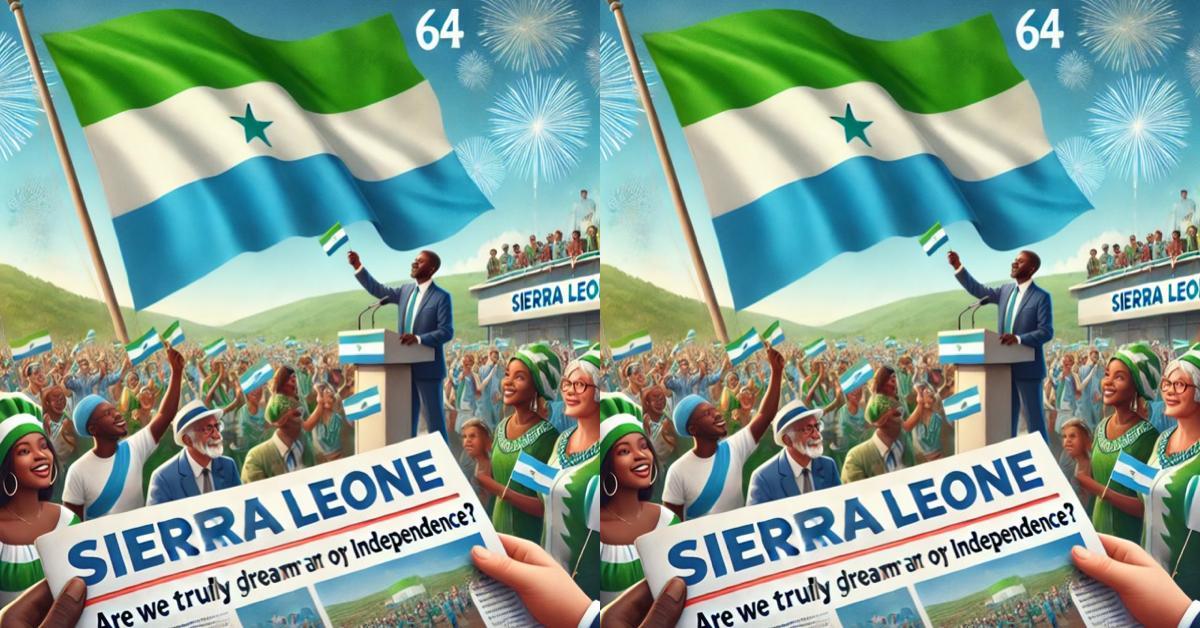Africa-Press – Sierra-Leone. On April 27, 1961, Sierra Leone embraced freedom, raising our green, white, and blue flag high with hope and pride. Sixty-four years later, we find ourselves standing at a critical crossroad, where reflection meets ambition. Are we truly progressing as a nation?
How have the political ideologies of our past leaders shaped the Sierra Leone we know today? And most importantly, how do we unite as one people to fulfill the vision of our independence heroes?
When Sierra Leone gained independence, Sir Milton Margai, our first Prime Minister, believed strongly in unity, moderate governance, and a steady approach to development. He led with a spirit of national cohesion that allowed Sierra Leone to find her footing as a young nation. His successor, Sir Albert Margai, introduced a more centralized form of governance, believing that a strong one-party system would maintain order and discipline, although his leadership sowed seeds of political tension.
The era of Siaka Stevens saw a dramatic shift toward authoritarianism under the All People’s Congress (APC). Stevens believed in consolidating power, favoring a one-party system and a controlled economy. Although he built some national infrastructure, his leadership is often remembered for widespread corruption and political oppression. Joseph Saidu Momoh, who followed, struggled to maintain the old system amid an economy that was crumbling and a population growing increasingly restless. His inability to inspire change ultimately led to his downfall.
The 1992 military coup brought Captain Valentine Strasser and the National Provisional Ruling Council (NPRC) to power. They promised reforms and to fight corruption, but the period became marked by continued instability. The real healing of Sierra Leone came under Ahmad Tejan Kabbah, who, with the Sierra Leone People’s Party (SLPP), championed peace and national reconciliation after a devastating civil war. His leadership steered the country toward democratic governance and rebuilding efforts that are still felt today.
In the modern era, Ernest Bai Koroma pushed for infrastructural growth and energy reform through his “Agenda for Change” and “Agenda for Prosperity,” but concerns about corruption persisted. Julius Maada Bio, our current president, is focused on human capital development, free quality education, and battling corruption with the hope of transforming Sierra Leone into a modern, thriving democracy.
Looking back, there is clear evidence that Sierra Leone has progressed. We have overcome war, economic collapse, and deep divisions. Our democracy, while imperfect, has matured. Free speech, multiparty elections, and peaceful transitions of power are now a reality. The foundations of education and infrastructure are being laid for future generations. Yet, deep challenges remain. Political division, youth unemployment, weak institutions, and corruption continue to threaten the dream of a united, prosperous Sierra Leone.
The lessons from our past leaders are clear: unity, resilience, modernization, and justice must be our guiding lights. No single president can build Sierra Leone alone. True development requires every citizen, every tribe, and every region working together, beyond political colors or personal interests. We must invest heavily in education, technology, agriculture, and the strengthening of institutions. We must foster a political culture where patriotism is valued above partisanship, and where leadership is measured not by party loyalty, but by service to the people.
At 64, Sierra Leone stands at the threshold of new possibilities. Our journey has been hard, but our spirit remains unbroken. The dream of independence lives on, and it demands action from every citizen. Together, as one people, we can build a Sierra Leone where future generations will not only survive but thrive — a Sierra Leone that is a shining example of hope, resilience, and progress in Africa.
Source: Sierraloaded
For More News And Analysis About Sierra-Leone Follow Africa-Press






